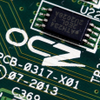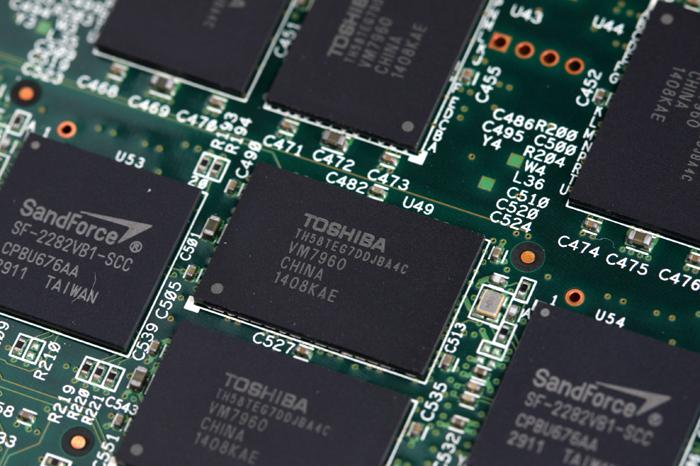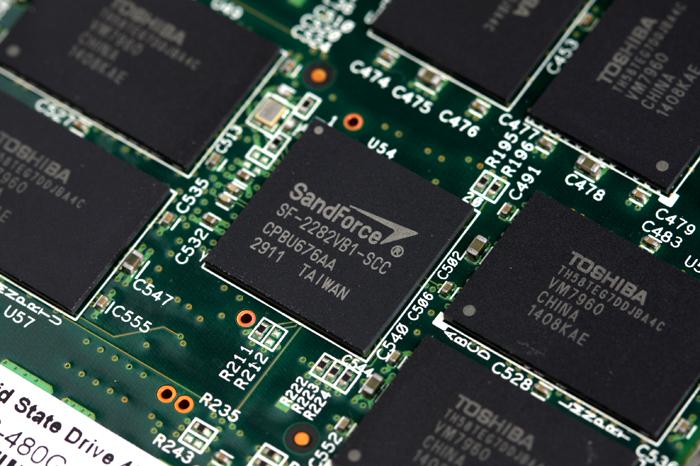The SSD NAND FLASH Partitions
The SSD NAND FLASH Partitions
So the storage unit we'll be testing today is a 480 GB version. Here's how that works. OCZ places four Toshiba NAND flash partition of 16 ICs onto the PCB. The NAND FLASH partitions all get one new SandForce 2281 assigned for some massive multi-channel IO. The RevoDrive 350 series uses asynchronous Toshiba MLC NAND (19nm) memory by the way.
What About 19 nm NAND Lifespan?
I've been saying this over and over again, personally I'm not a fan of the new 19 and 20 nm NAND FLASH memories, over the years the overall lifespan of the ICs has been reduced from 10,000 towards 5,000 program/erase cycles. The numbers for consumer grade 19 nm NAND flash memory (as used on the SSD tested today) are even lower at 2,500 program/erase cycles. But granted, as drastic as that sounds, it's all relative as this lifespan will last longer than any mechanical HDD. Drive wearing protection will help you out greatly. With a normal filled SSD and very heavy writing/usage of say 20 GB data each day 365 days a year you'd be looking at roughly 50 full SSD write cycles per year, out of the 2,500 (worst case scenario) available. However, all calculations on this matter are debatable as usage differs and even things like how much free space you leave on your SSD can effect the drive. But quick math would show 50 years lifespan.
SandForce, opposed to other controllers, enforces a trick as they can write to the FLASH memory less than the competition needs to by using real time compression. The SF controllers store a representation of your data and not the actual data itself. It does that by using a partition of the available NAND flash memory. This is why on SandForce based drives you do not see an extra memory cache chip, which in fact saves on the bill of materials used for the SSDs. The SF-2281 series controller will support up to roughly 500 MB/s sequential read and write speeds, that's ~62.5 MB/s per one of the available eight channels. Combined the bandwidth is just exceptional for a RAID drive.
The trick is that the four controllers on the RevoDrive 350 are pointed towards that RAID controller, here two partitions are configured as RAID 0, done twice... effectively doubling up performance per array and thus boosting performance close towards 2 Gigabyte per second!
That's roughly what you need to know about the NAND memory and SandForce controllers. Let's move onwards to that RAID unit, as it comes with VCA 2.0 layer that adds some pretty snazzy features.



